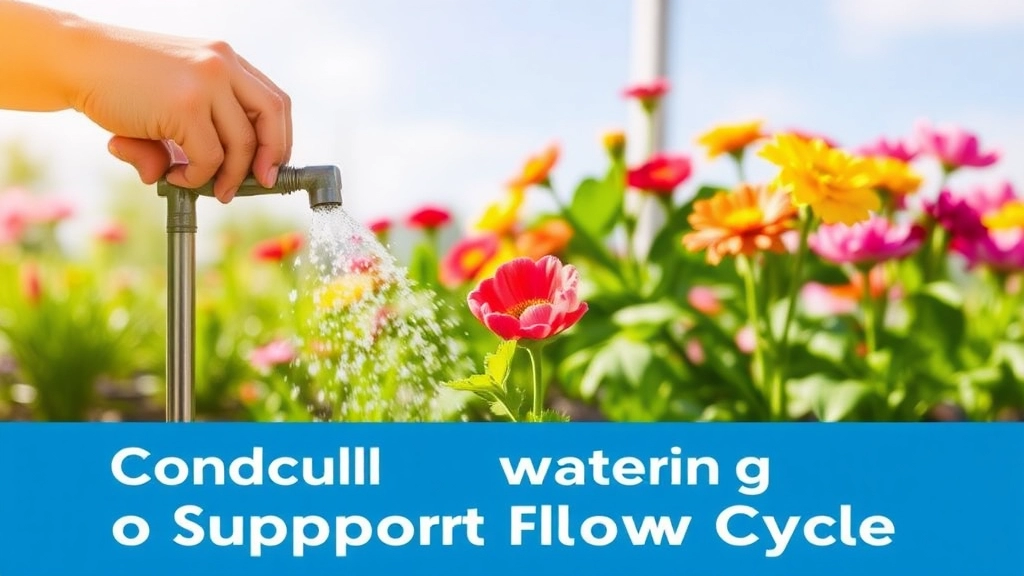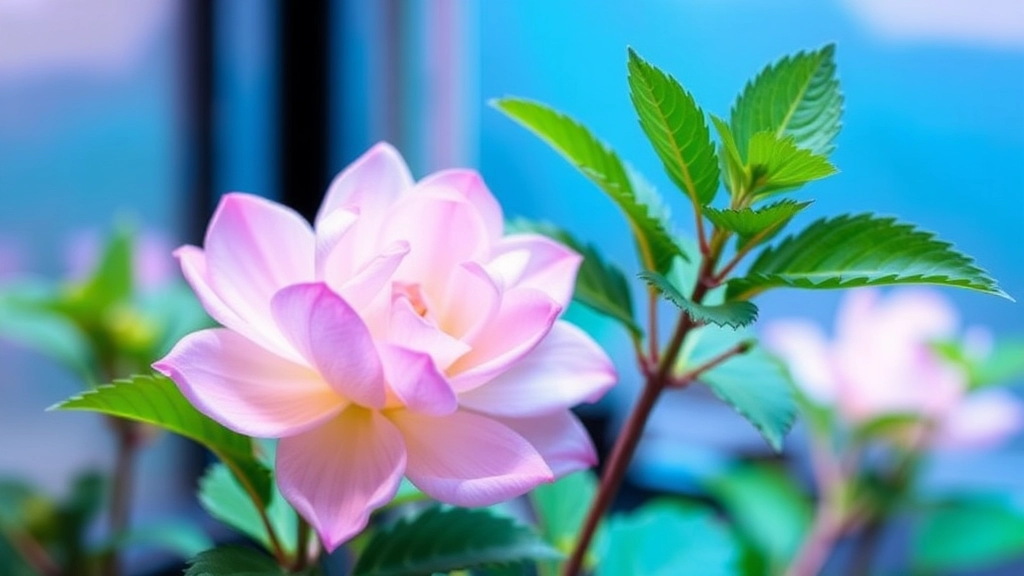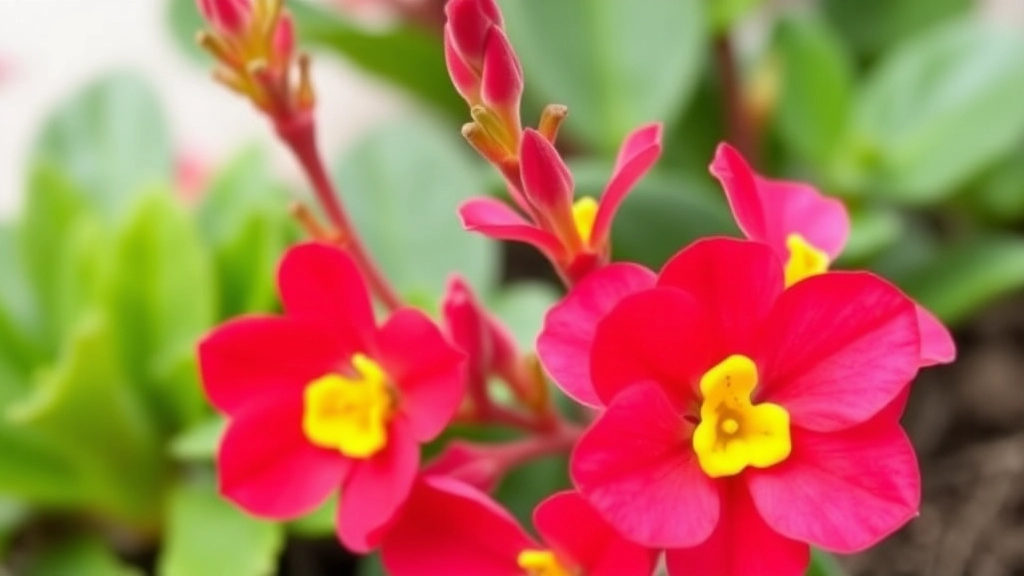Getting Your Kalanchoe to Bloom
Getting your Kalanchoe to bloom can be a rewarding challenge. The key lies in understanding its needs and creating the right environment. To start, optimising light exposure is crucial. Place your Kalanchoe in a spot where it gets bright, indirect sunlight for at least six hours a day. This will encourage the plant to develop buds and eventually bloom.
Next, control your watering schedule to support the bloom cycles. Kalanchoe thrives on a balance; water it thoroughly, but let the soil dry out between waterings. Overwatering can lead to root rot, which hampers blooming. Additionally, create a rest period by reducing water and light exposure for a few weeks. This dormancy phase mimics their natural habitat, prompting the plant to rebloom when regular care resumes.
Optimize Light Exposure for Flowering
Are you struggling to get your plants to bloom?
Light exposure is a crucial factor in the flowering process.
Plants rely on light to trigger their blooming cycles, and getting it right can make all the difference.
Understanding Light Requirements
- Duration: Most flowering plants require 12-16 hours of light per day.
- Quality: Use full-spectrum grow lights to mimic natural sunlight.
- Intensity: Ensure the light is strong enough to penetrate the foliage.
Tips for Optimal Light Exposure
- Positioning: Place your plants where they can receive direct sunlight for the maximum duration.
- Supplemental Lighting: If natural light is insufficient, consider using LED grow lights.
- Adjusting Light Cycles: For some plants, adjusting the light cycle can encourage blooming. For example, reducing light exposure can trigger flowering in specific species.
Real-Life Example
When I first started gardening, I noticed my orchids weren’t blooming as expected. After researching, I realised they needed more light. I moved them closer to a south-facing window and added a grow light. Within weeks, they began to flourish.
For more detailed guidance on getting your plants to bloom, check out our Ultimate Guide to Flowering Kalanchoe Care. Additionally, if you’re interested in indoor gardening, our Guide to Caring for Kalanchoe House Plants provides valuable information.
Control Watering to Support Bloom Cycles

Ever found yourself wondering why your flowers aren’t blooming as they should?
Watering is one of those crucial factors that can make or break your blooms.
Getting the watering right is essential for supporting those vibrant flower cycles.
Understanding Your Plants’ Needs
Every plant has its own watering requirements.
Here’s how to nail it:
- Check the Soil Moisture: Stick your finger an inch or so into the soil. If it feels dry, it’s time to water.
- Water Deeply but Infrequently: Instead of giving a little water every day, soak the soil thoroughly every few days. This encourages deep root growth.
- Adjust Based on Weather: Hot, sunny days mean your plants might need a bit more water, while cooler, cloudy days can mean less.
Signs of Overwatering vs. Underwatering
It’s easy to go overboard, so here’s what to look for:
- Overwatering: Yellowing leaves, wilting, or a soggy soil feel. If your flowers are drooping and the soil is constantly wet, you might be giving them too much love!
- Underwatering: Crispy edges on leaves, drooping stems, or dry soil. If your plants look parched, they’re begging for a drink.
Timing is Everything
Watering at the right time can also impact blooming:
- Morning Watering: This is the best time. It allows the plants to absorb moisture before the heat of the day kicks in.
- Avoid Evening Watering: Watering late can lead to damp soil overnight, increasing the risk of diseases.
Practical Tips for Watering
- Use a Soaker Hose or Drip Irrigation: These methods deliver water directly to the roots, reducing waste.
- Mulch Your Beds: A layer of mulch helps retain moisture, meaning you won’t have to water as often.
- Keep a Watering Schedule: Consistency is key. Mark it on your calendar or set a reminder.
Create a Rest Period for Dormancy
Have you ever wondered why some plants seem to thrive while others struggle? One often-overlooked aspect is the importance of a rest period for dormancy.
Creating a rest period is essential for your plants to recharge and prepare for the next blooming cycle.
Why Dormancy Matters
- Energy Conservation: Plants need to conserve energy during dormancy, allowing them to bloom more vibrantly when the time comes.
- Nutrient Uptake: A rest period helps plants absorb nutrients more effectively, ensuring they have what they need for future growth.
How to Implement a Rest Period
- Timing: Identify the right time for dormancy, typically in late autumn or winter, depending on the plant species.
- Reduce Watering: Cut back on watering to mimic natural conditions; overwatering can disrupt the dormancy process.
- Lower Light Exposure: Gradually reduce the amount of light your plants receive to signal that it’s time to rest.
- Temperature Control: Maintain cooler temperatures to encourage dormancy without exposing plants to frost.
By giving your plants this much-needed break, you’re setting the stage for healthier blooms down the line. For more detailed guidance on plant care, check out our post-flowering care tips for Kalanchoe and our essential fall Kalanchoe care tips.
Use Temperature and Humidity Adjustments to Boost Blooms

Have you ever wondered why your plants aren’t blooming as vibrantly as you’d hoped?
Temperature and humidity play a crucial role in the flowering process.
By making the right adjustments, you can significantly enhance your blooms.
Understanding Ideal Conditions
- Temperature:
- Most flowering plants thrive in a temperature range of 20-25°C (68-77°F) during the day.
- At night, a slight drop to around 15-18°C (59-64°F) can encourage blooming.
- Humidity:
- Aim for humidity levels between 40-60%.
- Higher humidity can help prevent dehydration and promote healthy blooms.
Practical Tips for Adjustments
- Use Thermometers and Hygrometers:
- Monitor your growing environment regularly.
- These tools help ensure your plants are in their ideal temperature and humidity range.
- Ventilation:
- Ensure good airflow to prevent heat buildup and excess humidity.
- Open windows or use fans to maintain a balanced environment.
- Humidity Trays:
- Place trays filled with water near your plants.
- This can naturally increase humidity levels around them.
- Heating Mats:
- For cooler months, consider using heating mats to maintain optimal soil temperatures.
- This can encourage root growth and, in turn, boost blooms.
- Misting:
- Lightly mist your plants during hot, dry days.
- This can temporarily increase humidity and provide a refreshing boost.
Pruning and Deadheading to Promote New Growth
Are your plants struggling to bloom? One of the most effective ways to encourage new growth is through pruning and deadheading.
Pruning involves cutting back certain parts of the plant to promote healthier growth. Deadheading, on the other hand, is the practice of removing spent flowers. Both techniques can significantly enhance the blooming cycle.
Here’s how to get started:
- Identify the Right Time:
- Prune in early spring before new growth starts.
- Deadhead regularly throughout the blooming season.
- Use Proper Tools:
- Sharp, clean pruning shears are essential to make clean cuts.
- Always disinfect your tools to prevent disease.
- Know What to Cut:
- For pruning, remove dead or damaged branches.
- For deadheading, snip off flowers that have wilted or faded.
- Encourage New Growth:
- Pruning helps shape the plant and allows more light to reach inner buds.
- Deadheading prevents the plant from putting energy into seed production, redirecting it towards blooming.
Benefits of Pruning and Deadheading:
- Promotes bushier growth.
- Extends the blooming period.
- Reduces the risk of disease by improving air circulation.
For example, I once had a rose bush that was struggling to bloom. After a thorough pruning and consistent deadheading, it transformed into a vibrant display of flowers within weeks.
For more detailed tips on how to care for your plants, check out our ultimate guide to flowering Kalanchoe care tips and learn about the causes and fixes for drying Kalanchoe leaves.
Address Common Issues: Pests and Overwatering Prevention
So, you’ve got your plants thriving, but what about those pesky pests and the risk of overwatering?
It’s a real concern, isn’t it? You put in all that effort, and then bam! Aphids or root rot show up uninvited.
Let’s tackle these issues head-on.
Pests: The Unwanted Guests
Common Pests to Watch For:
- Aphids: Tiny, sap-sucking nuisances.
- Spider Mites: They love to hide on the undersides of leaves.
- Whiteflies: These little flyers can quickly multiply.
Prevention Tips:
- Regular Inspections: Check your plants weekly. Look for any signs of damage or tiny critters.
- Natural Predators: Introduce ladybugs or lacewings. They’ll munch on the bad guys.
- Neem Oil: A natural pesticide that’s effective against many pests. Just spray it on affected areas.
Overwatering: The Silent Killer
Signs of Overwatering:
- Yellowing leaves
- Wilting despite wet soil
- Root rot (the ultimate nightmare)
How to Prevent It:
- Check Soil Moisture: Stick your finger an inch into the soil. If it’s still damp, hold off on watering.
- Use Well-Draining Soil: Mix in perlite or sand to improve drainage.
- Watering Schedule: Set a routine, but be flexible. Adjust based on the season and plant needs.
For more detailed tips on keeping your Kalanchoe plants healthy, check out our essential Kalanchoe care tips for summer success and learn how to make your Kalanchoe flower again.
FAQs on How to Get Kalanchoe to Bloom
How often should I water my Kalanchoe to encourage blooming?
Water deeply but infrequently. Soak the soil thoroughly every few days rather than giving a little water every day. This encourages deep root growth and supports blooming cycles.
What are the signs of overwatering and underwatering in Kalanchoe?
Overwatering: Look for yellowing leaves, wilting, or constantly wet soil. If your flowers are drooping and the soil feels soggy, you’re likely overwatering.
Underwatering: Check for crispy edges on leaves, drooping stems, or dry soil. If the plant looks parched, it needs more water.
When is the best time to water Kalanchoe for optimal blooming?
Morning watering is ideal as it allows the plants to absorb moisture before the heat of the day. Avoid evening watering to prevent damp soil overnight, which can increase the risk of diseases.
What temperature and humidity levels are ideal for Kalanchoe blooming?
Temperature: Aim for 20-25°C (68-77°F) during the day and a slight drop to 15-18°C (59-64°F) at night.
Humidity: Maintain levels between 40-60% to prevent dehydration and promote healthy blooms.
How can I adjust temperature and humidity to boost Kalanchoe blooms?
Use thermometers and hygrometers to monitor conditions, ensure good ventilation, and consider using humidity trays or heating mats. Lightly misting the plants on hot, dry days can also help temporarily increase humidity.
What practical tips can help me maintain the right conditions for Kalanchoe blooming?
Use soaker hoses or drip irrigation to deliver water directly to the roots, apply mulch to retain moisture, and keep a consistent watering schedule. Additionally, ensure good airflow and consider using heating mats during cooler months.
References
-
Signs of Overwatering Plants – Gardening Know How
-
How to Water Your Plants – The Spruce
-
Temperature and Humidity for Plants – Gardener’s Supply
